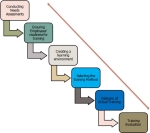
Lettie Tauchert @ lettietauchert Member Since: 25 Jun 2025
 United States
United States
About Me
Headhunting Vs. Recruiting: Which Drives Better Business Growth?

Businesses require top-tier skill to drive success and sustain development. Headhunting and hiring are 2 crucial methods to talent acquisition. While often used interchangeably, these approaches have unique processes, goals, and influence on a company's long-lasting success. For organizations intending to construct a high-performance team comprehending the distinction in between headhunting and traditional recruiting is essential.

Headhunting vs. Recruiting: What's the Difference?

At its core, hiring includes filling task vacancies through a broad, typically reactive, procedure. Recruiters normally work with active task seekers-candidates who request job postings, participate in job fairs, or respond to job advertisements. Recruiting is typically transactional, concentrating on short-term working with requirements.
On the other hand, headhunting is a more strategic and proactive approach to talent acquisition. Headhunters, also called executive search specialists, focus on determining, attracting, and convincing high-caliber talent-many of whom are not actively seeking brand-new chances. This technique is particularly efficient for hiring executives, senior management, and specialized specialists whose abilities and expertise are vital for an organization's long-term success.
What Does Headhunting Entail?
Headhunting is a meticulous procedure that surpasses conventional recruitment efforts. It needs a deep understanding of industry patterns, company culture, and candidate psychology. Unlike recruiters who frequently depend on databases and job posts, headhunters utilize targeted research study and direct outreach to engage with top talent.

The procedure normally includes the following actions:
Understanding the Client's Needs: Headhunters start by talking to the employing business to figure out the precise abilities, experience, and character qualities required for the function.
Marketing Research and Mapping: Extensive research is carried out to determine possible prospects, including those currently employed by rivals or leading firms in the market.
Active Outreach: Headhunters engage with potential candidates through discreet networking, personalized messaging, and tactical persuasion.
Screening and Assessment: Potential hires undergo an extensive vetting procedure, including background checks, thorough interviews, and evaluation of cultural fit.
Negotiation and Onboarding Support: Headhunters assist in smooth negotiations between the prospect and the hiring business to ensure an effective placement.
The Pillars of Headhunting
The effectiveness of headhunting depends on four key pillars: research study, mapping, active outreach, and market intelligence.
1. Research
Comprehensive research study is the foundation of a successful headhunting strategy. Headhunters conduct comprehensive studies on market trends, rival hiring strategies, and emerging skill swimming pools to determine ideal prospects. This research-driven approach guarantees that business access the very best talent instead of opting for the very best available candidates.
2. Mapping
Talent mapping includes determining and classifying potential prospects based on their competence, experience, and career trajectory. This process enables headhunters to build a tactical pipeline of talent, guaranteeing that businesses have access to leading experts whenever a key role opens.
3. Unlocking Hidden Talent
By proactively contacting these people, headhunting opens a pool of candidates that would otherwise stay unattainable to recruiters. Unlike standard recruiting, which focuses on candidates actively looking for jobs, headhunting targets passive candidates-highly competent professionals who are not actively searching for brand-new opportunities but may be open up to the best deal. Through individualized outreach and relationship-building, headhunters successfully engage these individuals, providing engaging career opportunities that align with their aspirations.
4. Market Intelligence
Headhunters take advantage of industry insights, rival analysis, and income benchmarks to assist employing choices. Market intelligence helps companies craft competitive task deals, boost their employer brand name, and stay ahead in the skill acquisition video game.
Why Headhunting Has a Better Long-Term Impact on Business Growth
While conventional recruiting is effective for immediate jobs, headhunting has a more profound long-term effect on a business's development and stability. Here's why:
1. Competitive Edge in the Market
Companies that purchase headhunting gain a competitive advantage by securing leading talent before their competitors do. This proactive hiring technique strengthens a company's position in the industry, enabling it to stay ahead in innovation, efficiency, and market management
2. Access to Top-Tier Talent
Headhunting ensures that organizations bring in the finest experts in the industry, not just those actively searching for tasks. This high-caliber skill contributes significantly to business development, innovation, and competitive benefit.
3. Stronger Cultural Fit
Since headhunters take the time to comprehend both the company's culture and the candidate's profession objectives, they create stronger matches. Employees who align with a business's values and vision tend to be more engaged, efficient, and devoted.
4. Increased Employee Retention
Hiring the right prospect reduces turnover rates and boosts workforce stability. Employees put through headhunting are frequently more dedicated to their roles, leading to higher retention rates compared to candidates sourced through traditional recruiting techniques.
5. Strategic Workforce Planning

Headhunting aligns with long-lasting workforce planning, ensuring that companies have the right management and expertise to drive future development. This technique assists services build management pipelines, prepare for talent gaps, and alleviate employing threats.
While recruiting is necessary for meeting immediate hiring requirements, headhunting is a more tactical and long-lasting technique to securing top talent. By focusing on research study, talent mapping, proactive outreach, and market intelligence, headhunting enables business to draw in the best experts, foster strong cultural alignment, and make sure sustained business growth. Purchasing headhunting as a core talent acquisition technique empowers companies to build high-performing teams that drive success well into the future.


